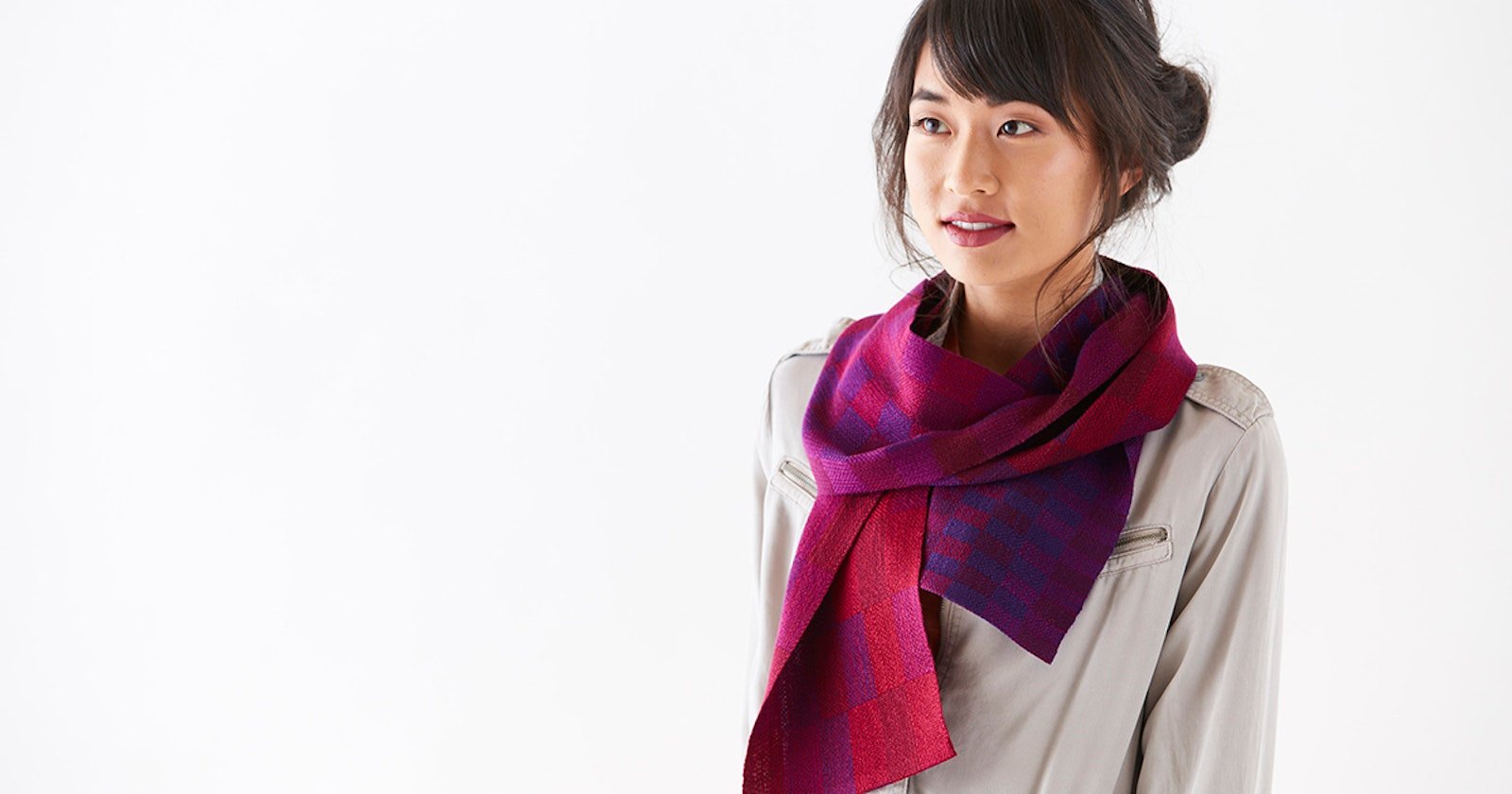As I write this letter, I’m being held captive by two long warps that I feel compelled to weave off in the most ordinary of ways. The irony doesn’t escape me that this is happening while editing the Handwoven May/June 2019 issue, which is dedicated to using long warps in inventive ways. On one loom, I’m weaving eight yards of fabric for napkins using 16/2 cotton in a four-pick repeat. I’m tracking my progress to preserve my sanity, but it isn’t really necessary because the end of the warp determines when I finish. The shawl on another loom is based on one of Linda Ligon’s drafts from 1979. It is a two-shuttle weave with a tight sett that is slow to weave—a few inches are about all I can handle in a session without getting restless and yearning to start another project.
Why does a long warp make us dream of the next project? I believe for many of us it is because once we know that an idea has merit, we want to test our next idea. That is the genius of being able to adapt a warp in creative ways. Unlike the situation I find myself in today, you can design a warp that delivers multiple projects, each one slightly different—or each one very different—from the others.
We all went crazy over Susan Poague’s Circles and Checks Towels! Photo by George Boe.
Some of the designers chose to use the efficiency of warping once to weave multiple similar projects including turned taqueté towels, twill pot holders, sakiori picnic table and bench covers, and twill and crackle scarves. Other designers put on long warps to weave one project and then changed one or more of the key elements—tie-up, weft, or treadling—to weave a second entirely different project. Tom Knisely wove a twill baby blanket and a waffle-weave towel, Deanna Deeds wove a rep table runner and three coordinated doubleweave pillows, and Deborah Jarchow wove a light and airy scarf and then changed her weft to weave fabric for a sturdy purse.
Susan Wilson used a long crackle-threaded warp to weave two scarves and one isn’t even crackle! Photo credit: George Boe
In keeping with the technical nature of the issue’s theme, there are several articles about looms, tie-ups, and the relationship between reed and heddles. Anu Bhatia writes about her experience in tying on multiple warps to preserve a threading in Endnotes, and Elisabeth Hill describes weaving on a rigid-heddle loom during a cross-country road trip and how it enhanced her adventure. Our Traditions article is about weaving in the eastern part of North Carolina and is accompanied by a dimity project by Allen Walck.
There will always be the push and pull of efficiency versus creativity when determining warp length. I hope this issue of Handwoven inspires you with the possibilities contained in the long warp.
Weave well,
Susan



